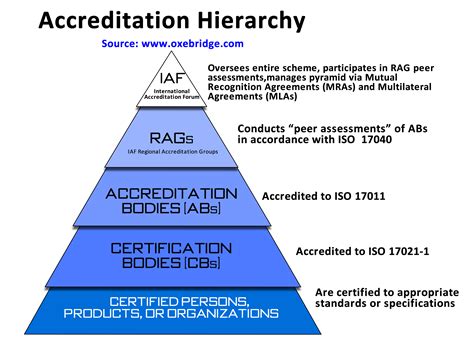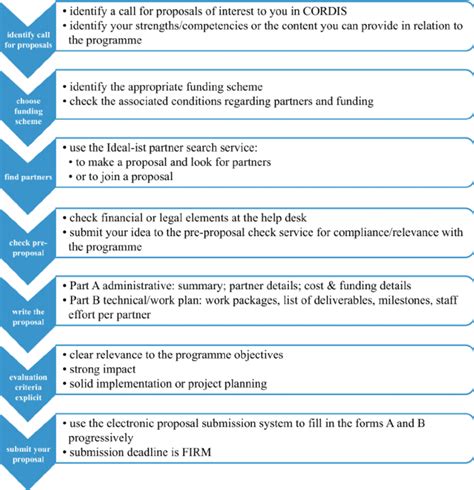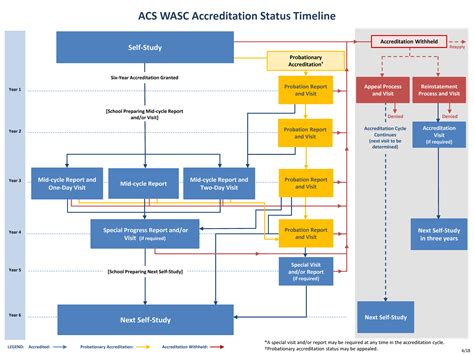Breaking News


Popular News


Learn about the accreditation process for surgical tech programs, including requirements, application process, evaluation, and renewal. Ensure your program meets the necessary standards.If you’re considering a career as a surgical technician, it’s important to understand the accreditation process for the programs that train these medical professionals. Accreditation ensures that a surgical tech program meets certain standards of quality and provides students with the education and training they need to succeed in the field. In this blog post, we’ll take an in-depth look at the accreditation process for surgical tech programs, covering everything from the initial application to the renewal of accreditation status. I’ll walk you through the requirements for accreditation, the application and submission process, the evaluation and site visit, and the action plan for improvement if needed. By the end of this post, you’ll have a better understanding of what it takes for a surgical tech program to become accredited and maintain that accreditation status. Whether you’re a prospective student or a program administrator, this information will be valuable as you navigate the world of surgical tech education.
Contents

When it comes to accreditation requirements for surgical tech programs, there are a number of key factors that need to be considered. The program must meet the standards set by the accrediting body, which may include specific curriculum guidelines, clinical experience requirements, and faculty qualifications. Additionally, the program must demonstrate compliance with all applicable regulations and standards set by government agencies and professional organizations.
One of the most important accreditation requirements for surgical tech programs is the need for continuous improvement. This means that the program must have a process in place for assessing and addressing areas where it does not meet the required standards. It must also have a plan for ongoing evaluation and improvement to ensure that the quality of education and training remains at the highest level.
Meeting accreditation requirements can be a complex and time-consuming process, but it is essential for ensuring the quality of education and training provided by surgical tech programs. Those seeking accreditation must carefully review and adhere to the specific requirements set forth by the accrediting body. This involves thorough documentation of compliance and a commitment to continuous improvement.

Applying for accreditation for a surgical tech program involves several steps and careful submission of required documents. The process begins with the program director obtaining and reviewing the accreditation requirements set forth by the accrediting body. These requirements outline the necessary qualifications and standards that must be met for the program to be accredited.
Once the requirements are understood, the application forms and supporting documentation must be completed and submitted. This may include educational materials, faculty qualifications, and program outcomes. The program director plays a key role in overseeing the compilation of these materials and ensuring that they align with the evaluation criteria for the accreditation process.
After the submission is received, the accrediting body will review the application and documentation to determine if the program meets the accreditation standards. This review process may take several weeks or months, during which the program may be required to provide additional information or clarification on certain aspects of the submission.
It is essential for the program director and faculty to carefully follow the submission process and provide accurate and comprehensive information to the accrediting body. This will help to ensure a smooth and efficient evaluation of the program, leading to a potential accreditation status that reflects the quality of the surgical tech program.

Once a surgical tech program has completed the application and submission process, the next step in the accreditation process is the evaluation and site visit. This is a critical phase where an accrediting agency sends a team of experts to assess the program’s compliance with accreditation requirements and standards.
During the evaluation and site visit, the team will conduct interviews with faculty, students, and administrators to gather information about the program’s strengths and areas for improvement. They will also review documents and observe the program’s facilities and resources to ensure they meet the necessary standards.
After the site visit, the accrediting agency will provide the program with a report that outlines its findings and recommendations. This report will serve as the basis for the program’s action plan for improvement, as it works to address any identified deficiencies and enhance the quality of its educational offerings.
Following the evaluation and site visit, the accrediting agency will make a decision regarding the program’s accreditation status and renewal. Programs that meet the required standards will be granted accreditation, while those that do not may have the opportunity to make improvements and reapply for accreditation in the future.

When a surgical tech program receives feedback from the accreditation board indicating areas that need improvement, it is essential to develop a strong action plan to address the deficiencies. The first step is to carefully review the specific feedback provided by the accreditation board, identifying the exact areas that need improvement. This may involve a thorough analysis of the program’s curriculum, faculty qualifications, clinical training opportunities, or other relevant aspects of the program.
Once the areas for improvement have been identified, the program must develop a comprehensive action plan that outlines specific steps to be taken in order to address the deficiencies. This may involve revising the curriculum, providing additional training for faculty members, or seeking out new clinical training partnerships to enhance the educational experience for students. It is crucial for the program to establish clear and measurable goals for each area of improvement, as well as a timeline for implementation.
Furthermore, the program should designate responsible parties for each aspect of the action plan, ensuring that there is accountability for the implementation of necessary changes. Regular progress checks and updates should be scheduled to monitor the effectiveness of the action plan and make any necessary adjustments along the way. This demonstrates to the accreditation board that the program is actively working to address the identified deficiencies and is committed to continuous improvement.
Ultimately, the development and implementation of a comprehensive action plan for improvement is crucial to maintaining accreditation for the surgical tech program. By taking proactive steps to address areas in need of improvement, the program can demonstrate its commitment to providing a high-quality education for students and meeting the standards set forth by the accreditation board.

After a surgical tech program has successfully completed the initial accreditation process, they must maintain their accreditation status in order to continue operating. This involves periodically submitting reports and evidence to demonstrate ongoing compliance with the accrediting body’s standards. The accreditation renewal process typically occurs every few years, and requires the program to demonstrate continuous improvement and adherence to established guidelines.
During the renewal process, the accrediting body will review the program’s compliance with the standards and may conduct a site visit to evaluate the program firsthand. This visit provides an opportunity for the accrediting body to assess the program’s facilities, faculty qualifications, and student outcomes to ensure that the program continues to meet the necessary criteria for accreditation.
Once the review process is complete, the program will receive a determination on their accreditation status. If the program is found to be in compliance with all standards, they will receive a renewed accreditation status, allowing them to continue offering their surgical tech program. However, if areas of non-compliance are identified, the program may need to develop and implement an action plan for improvement in order to address these issues and maintain their accreditation status.
| Accreditation Status | Renewal Process | Site Visit |
|---|---|---|
| Determination of compliance with standards | Review and submission of evidence | Evaluation of facilities and student outcomes |
| Renewed status for compliant programs | Opportunity for continuous improvement | Assessment of program’s adherence to guidelines |
Overall, maintaining accreditation status and going through the renewal process is essential for surgical tech programs to ensure that they are meeting the highest standards of quality and providing students with a comprehensive education. It also demonstrates the program’s commitment to ongoing improvement and adherence to industry guidelines.

What is the purpose of accreditation for surgical tech programs?
Accreditation ensures that surgical tech programs meet certain standards of quality and provide students with a valuable education.
How does a surgical tech program become accredited?
A program must undergo a review by an accrediting agency, which evaluates the curriculum, faculty qualifications, and student outcomes.
What are the benefits of attending an accredited surgical tech program?
Students can be confident that the program meets industry standards and will prepare them for a successful career as a surgical technician.
Can you transfer credits from a non-accredited surgical tech program to an accredited one?
It depends on the policies of the accredited program, but in many cases, credits from non-accredited programs may not be accepted.
How can I verify if a surgical tech program is accredited?
You can check with the accrediting agency or search their database of accredited programs. You can also ask the program directly for their accreditation status.
Are there different types of accreditation for surgical tech programs?
Yes, there are national and regional accrediting agencies, each with its own set of standards for evaluating programs.
What happens if a surgical tech program loses its accreditation?
The program will need to address any deficiencies and reapply for accreditation. Until then, it may not be able to accept new students or may lose its accreditation status.